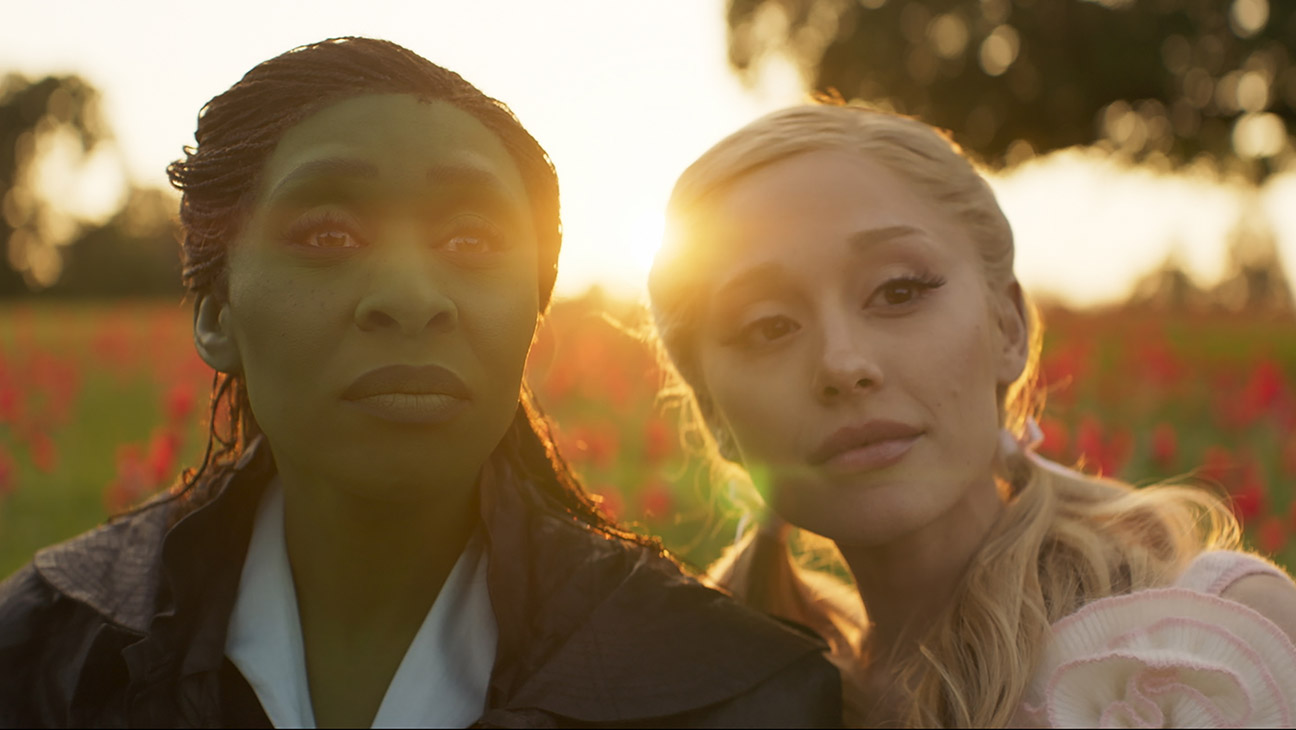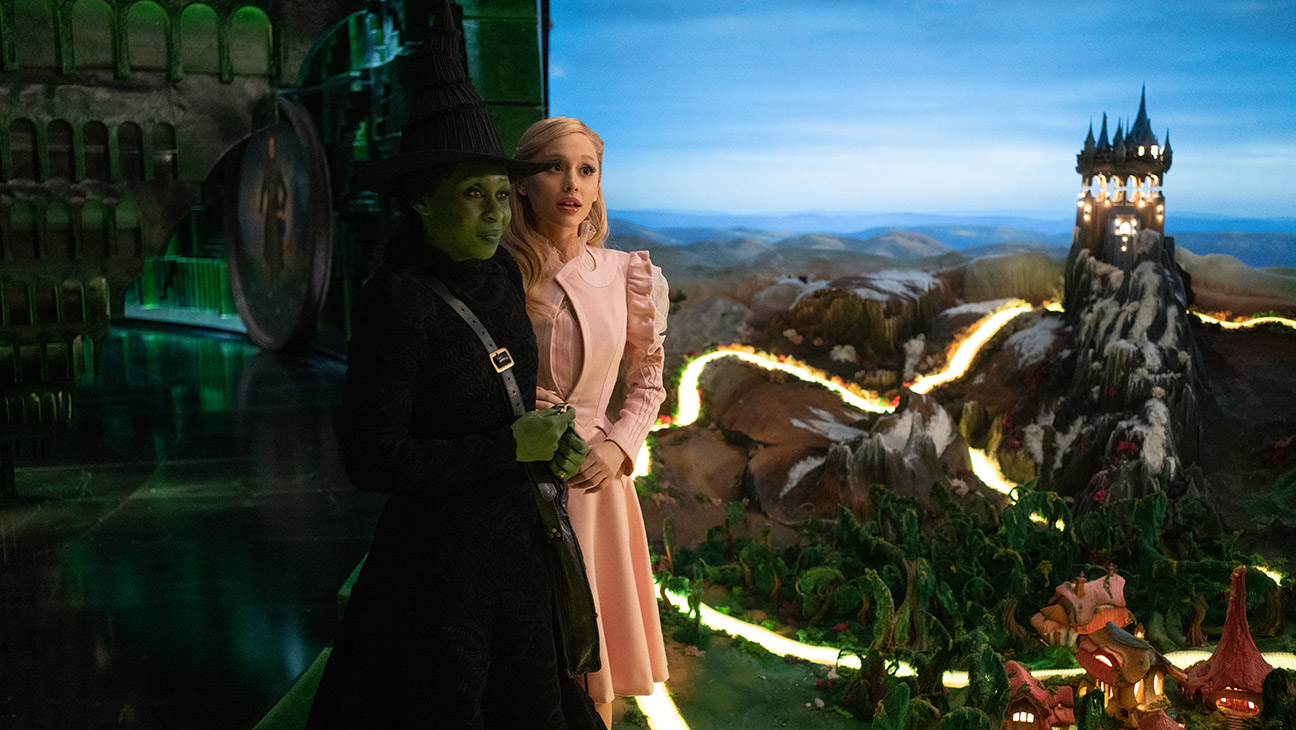‘Wicked’ Easter Eggs for Your Second (or Third) Watch

The phenomenon that is Wicked has swept up audiences around the world, and has prompted fans to visit or revisit Gregory Maguire’s book series, which began with Wicked (1995) and The Wizard of Oz (1939). And of course, those two works that inspired the Broadway musical and John M. Chu’s two-part film adaptation were built on the foundations of L. Frank Baum’s seminal 14-book Oz series. Just as Maguire took a revisionist approach to Baum’s work — and Stephen Schwartz and Winnie Holzman did the same to Maguire’s novel with the musical — Chu, Holzman and Dana Fox have updated Wicked once more for the cinema with Wicked and Wicked: For Good, which arrives Nov. 21, 2025, both starring Ariana Grande as Glinda the Good Witch and Cynthia Erivo as Elphaba the Wicked Witch of the West. But along with those updates comes an eye towards the past, and a respect by the filmmakers for the artists who paved the yellow brick road before them.
Here are the Easter eggs to look out for in Wicked — spoilers ahead.
-
“”
A Universal Language


Image Credit: Giles Keyte/Universal Pictures While The Wizard of Oz was released by MGM, Universal’s opening logo is the same one the studio used in 1939, the year that the Judy Garland classic was released. The title card for Wicked also uses the same font as the title card for The Wizard of Oz.
“”
-
“”
Fantastic Four


Image Credit: Courtesy of TCM/The Kobal Collection/WireImage.com As the camera pans over Oz during the opening scene, it’s impossible to miss Dorothy, the Scarecrow, the Tin Man and the Cowardly Lion, who will ultimately figure into the second movie, Wicked: For Good.
“”
-
“”
Ding Dong


Image Credit: Photofest As the denizens of Munchkinland celebrate the demise of the Wicked Witch (played by Cynthia Erivo), a group of children ring their bells to the tune of “Ding Dong! the Witch is Dead,” which was composed for The Wizard of Oz by Harold Arlen, with lyrics by E. Y. Harburg.
“”
-
“”
Where Did You Get Those Shoes?


Image Credit: Giles Keyte/Universal Pictures Elphaba’s (Erivo) sister, Nessarose (Marissa Bode), is gifted a pair of silver shoes with spiral shapes (or twisters) by her father. These are indeed the same shoes that Dorothy is eventually gifted by Glinda in the Wizard of Oz, foreshadowing Nessa’s future as the Wicked Witch of the East and the twister that eventually kills her. While some may have expected the iconic ruby slippers, those were solely the creation of MGM who thought ruby red would better showcase the capabilities of technicolor than silver. In Baum’s book, the shoes were silver and have remained silver in every subsequent adaptation, except for Return to Oz (1985) in which Disney paid a hefty fee to MGM in order to use a recreation.
Ruby slippers, though not a recreation’s of MGM’s, are seen in Wicked with Glinda’s (Ariana Grande) collection during “Popular.”
“”
-
“”
History Erased


Image Credit: Giles Keyte/Universal Pictures When Elphaba destroys the emblem of the Wizard (Jeff Goldblum) after trying to protect her sister, there is a portrait of former animal professors behind it. This foreshadows the capture, enslavement and reconditioning of animals, who ultimately lose their culture and ability to speak. There are of course modern parallels that can be drawn from this significant plot-point, but it was a key subplot in Maguire’s novel, which speaks to Dr. Dillamond’s (Peter Dinklage) concern over repeating the past.
“”
-
“”
Over the Rainbow


Image Credit: Giles Keyte/Universal Pictures A rainbow can be seen at the end of Elphaba’s song “The Wizard and I.” The theme and placement of song within the film’s runtime make it a companion piece to Dorothy’s “Somewhere Over the Rainbow.”
“”
-
“”
If He Only Had a Brain


Image Credit: Giles Keyte/Universal Pictures/Courtesy Everett Collection Prince Fiyero’s (Jonathan Bailey) song “Dancing Through the Life” points to the lack of meaning he finds in life and his presumed disinterest in thinking. This is later revealed as a coping method to deal with his unhappiness, until Elphaba brings out something good in him. But his performative ignorance, and his dance moves, all nod at his future transformation into the Scarecrow. Also, after first meeting Elphaba, after he nearly runs her down with his horse, she tells him to “get stuffed,” a clever reference to the Scarecrow’s stuffing constantly falling out in The Wizard of Oz.
“”
-
“”
Confusing Courage With Wisdom


Image Credit: Universal Pictures Shiz University’s new history professor brings a lion cub in a cage to his class and expounds on why it’s better for everyone if animals aren’t taught to speak and kept in captivity. Elphaba points out that the cub is trembling. She then uses poppy dust to put the professor and class asleep, except for Fiyero who remains safe from her spell. This explains why the Scarecrow was the only one not to fall asleep in the poppy field in The Wizard of Oz. Elphaba escapes with the cub on a bicycle — a nod to Margaret Hamilton’s performance as the Wicked Witch/Miss Gulch in the Wizard of Oz. Elphaba and Fiyero then hide the lion cub in the forest, where he is allowed to grow free and learn to speak. Dorothy later discovers the adult lion in that same forest, but the terror he faced as a cub had a lasting effect on him.
“”
-
“”
An Impractical Heart


Image Credit: Giles Keyte/Universal Pictures/Courtesy Everett Collection Boq Woodsman’s (Ethan Slater) future transformation into the Tin Man is also foreshadowed in Wicked, as he mentions crying a lot and carries a red handkerchief in his left breastpocket. His transformation will obviously be related to his relationship with Nessa, while he still pines for Glinda. The film makes Boq more sympathetic, showing that he truly does care for Nessa and is friends with her early on, and later, Elphaba, Glinda and Fiyero. Boq is further forced to commit to a relationship with Nessa after meeting her father. Boq’s heart is torn and though he isn’t heartless, his heart will be seized nonetheless.
“”
-
“”
Strange Weather


Image Credit: Giles Keyte/Universal Pictures Madame Morrible (Michelle Yeoh) reveals she has the power to change the weather, protecting Elphaba from getting rained on before she goes to meet The Wizard. This act, made simply to prevent Elphaba from getting her hair and clothes ruined by the rain, becomes the foundation of the urban legend that the Wicked Witch is allergic to water. Additionally, it’s an act of weather that ultimately brings Dorothy to Oz, killing Nessa and further positioning Elphaba’s former teacher to become her greatest adversary alongside the Wizard.
“”
-
“”
Here’s to the OGs


Image Credit: Frank Micelotta/Getty Images Idina Menzel and Kristin Chenoweth, who originated the roles of Elphaba and Glinda, respectively, in the Wicked Broadway stage musical have significant, unmissable cameos during the song “One Short Day,” as they recount the legend of the Wizard’s arrival in Oz. The pair get to play up their stage personas as well as share duets with their successors, Erivo and Grande.
“”
-
“”
The Blue Brick Road


Image Credit: Giles Keyte/Universal Pictures A Wicked movie scene absent from the stage musical has The Wizard having Elphaba and Glinda help him decide the color that the brick road leading to Oz should be. After going through various options — blue, red, green, and purple — Glinda suggests yellow.
“”
-
“”
Flying Monkeys


Image Credit: Giles Keyte/Universal Pictures In the Emerald Palace, Elphaba inadvertently creates the Winged Monkeys at the Wizard’s urging. Elphaba is horrified by the pain she causes the monkeys, while the Wizard seeks to use them as spies to hold onto control of Oz. Madame Morrible blames Elphaba for the monkeys’ transformation and sends them after her. As we know from The Wizard of Oz, the winged monkeys eventually follow the Wicked Witch. In Maguire’s novel, the winged monkeys are purposefully created by Elphaba as she experiments on the nature of the soul and seeks to find out what separates man from beast.
“”
-
“”
The Man Behind the Curtain


Image Credit: Giles Keyte/Universal Pictures In The Wizard of Oz, the Wizard says to the Tin Man, “And remember, my sentimental friend, that a heart is not judged by how much you love, but how much you are loved by others.” In Wicked, the Wizard is a perversion of this message, craving adoration as a means to stay in power, but having no love of his own to offer anyone. During his song “A Sentimental Man,” he performs shadow puppetry from behind a curtain, a homage to the line in the original film, “Pay no attention to the man behind the curtain.” There are also numerous hot air balloons in Wicked, referencing how the Wizard arrived in Oz. In the highest tower of the Emerald Palace, there are relics from the Wizard’s past on Earth, including a cart with his real name printed on the side, Oscar Diggs. The Wizard of Oz named the Wizard’s earthly counterpart Professor Marvel, and moviegoers may first recognize the name Oscar Diggs from Disney’s Wicked-inspired Oz the Great in Powerful (2013). But the Wizard’s true name — Oscar Zoroaster Phadrig Isaac Norman Henkle Emmannuel Ambroise Diggs — was revealed by L. Frank Baum in The Wonderful Wizard of Oz. Originally seeking to shorten his name by going by his initials, he tried O.Z.P.I.N.H.E.A.D. until realizing it spelled out Oz Pinhead. After that, he shortened his name to simply: Oz.
“”
Source: Hollywoodreporter
Related Posts
- Roundball Rocked: With NBA Return Looming, NBC Purges Scripted Roster
- SoundCloud Says It “Has Never Used Artist Content to Train AI Models” After Backlash on Terms of Service Change
- Fox News’ Camryn Kinsey Is “Doing Well” After Fainting on Live TV
- Kerry Washington and Jahleel Kamera in 'Shadow Force.'
Courtesy of Lionsgate
…
- This Alternative Artist Landed a Top-20 Chart Debut With an Album Made Almost Entirely on His Phone




